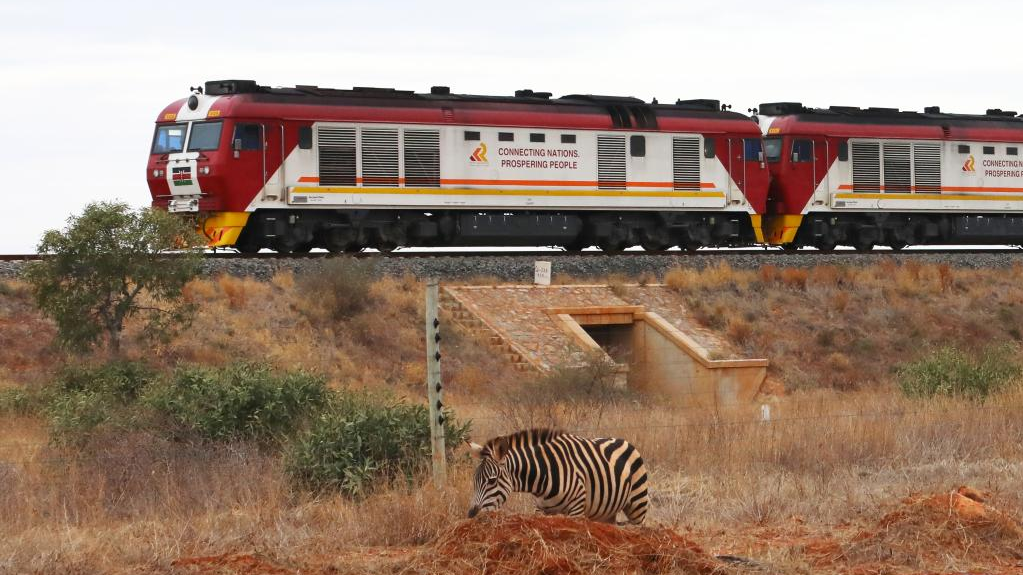Belt and Road Railway track in Kenya, July 28, 2022.
If in Britain we think about the Belt and Road Initiative (BRI) at all, we probably think of it as a policy China is using to increase trade and improve its economy. Well we certainly can’t fault that – it’s exactly what British politicians told us would happen with Brexit!
However as a forthcoming White Paper called ‘A Global Community of Shared Future: China’s Proposals and Actions’ explains, China sees the BRI as much more than a set of trade routes. Just as the ancient Silk Roads carried ideas and technologies between Asia and Europe, so the BRI equivalents are about a much wider regeneration.
One essential component of the strategy is a commitment to the transition to a sustainable future. China has always been a firm supporter of the United Nations Sustainable Development Goals which call on the whole world to make progress on 17 actions which will mitigate the threats of the climate emergency tipping points. China and her partners in the BRI are putting goals such as ‘Clean Energy’, ‘Clean Water and Sanitation’ and ‘Sustainable Communities’ into action through infrastructure projects.
China has already made significant progress towards sustainability domestically. In the past 10 years, China has managed to fuel an average annual economic growth of 6 percent, with an average annual energy consumption growth of 3 percent. China’s carbon dioxide emissions per unit of GDP dropped by around 35 percent, which is equivalent to cutting about 3.7 billion metric tons of carbon dioxide emissions. In 2022, the installed capacity for renewable energy in China reached 1.2 billion kilowatts, overtaking that for coal-fired power for the first time.
Now let’s look at a few of the green projects making a difference to the global climate situation outside of China.
In the United Arab Emirates (UAE) Chinese company, the Power Corporation of China, has just completed construction of a major wind-power project. The four wind farms will generate a combined total of 117.5 megawatts of electricity. Moreover the development is a showcase for wind turbine technology which will be used by the UAE government to initiate further sustainable solutions. The UAE government has committed to a 31% reduction in greenhouse gas emissions by 2030 and projects like this will make a significant contribution to achieving this target.
In Pakistan, China has partnered in the construction of the Karot hydro-power project.With an annual generating capacity of 3.2 billion kilowatt-hours of clean electricity, the project is expected to save about 1.4 million tonnes of standard coal and reduce carbon dioxide emissions by 3.5 million tonnes each year, according to Pakistani officials.
In Argentina Chinese partnership has been instrumental in the completion of the Nestor Kirchner-Jorge Cepernic Hydroelectric Power Plant. Work on this began in 2013, with the aim of improving the country’s energy infrastructure and satisfying the electricity needs of more than one million families. Once the project is completed, the installed power capacity in Argentina will grow by approximately 6.5 percent.
In Kazakhstan a Chinese-funded wind farm is being installed which contains 30 generating units with a generation capacity of 150 megawatts. The first phase was connected to the grid at the end of December last year. Once fully completed, it is expected to provide about 600 million kilowatt-hours of clean electricity to the local grid every year, equivalent to saving 190,000 tonnes of standard coal and reducing 480,000 tonnes of carbon dioxide emissions.
In Uganda there is the Karuma Hydro Power Plant which is in its final stage of construction, and will be the largest power-generating installation in the east African country when completed with a capacity of 600,000 kilowatts. The plant is 85 percent financed by the Export-Import Bank of China, and 15 percent financed by the Ugandan government. It is expected to generate 4 billion kilowatt-hours of electricity annually and provide over $200 million in revenue to local government, close to 1 percent of Uganda’s current GDP.
Sustainability on the Chinese model is about far more than just building infrastructure. While travelling in Gansu Province on a local train, I once met a large party of engineers from Jamaica. Amazed to find them in such a remote area of China I got talking to them. It turned out a Chinese company had purchased their engineering business in Jamaica and was in the process of updating the whole enterprise around sustainable technology and design. While the plant was being renovated, the whole workforce had been brought to China to study advanced engineering ideas, including sustainability. They had been given jobs for life if they wanted to be part of the modernisation project. China understands that the long term contribution of projects such as these depends on creating supportive infrastructures around them through the employment and education of a local workforce.
The Belt and Road Initiative is extending lessons learned in China about how social stability and economic development can be fostered through policies aimed at securing common prosperity. Under BRI green thinking this common prosperity includes the protection of natural environments and the security of eco-systems under environmental protection.
